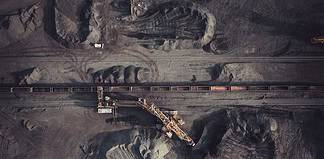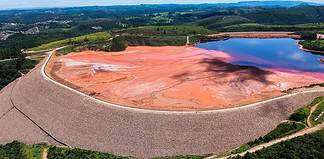Q&A with Gold Fields executive vice president legal & compliance Kelly Carter

As Chair of the Gold Industry Group and a graduate of the AICD, Kelly’s achievements have been recognised as one of the 2018 BMO “100 Global Inspirational Women in Mining”, a winner at the 2018 Business News 40 under 40 Awards, and as a finalist in the 2017 CME Women in Resources Awards.
The Australian Mining Review’s Kathleen Southway speaks with Kelly about the importance of stakeholder value creation in reaching Gold Fields’ 2030 global ESG targets.
AMR: What does stakeholder value creation mean to the Gold Fields? Who are the stakeholders and what value is Gold Fields creating?
KC: I think it really talks directly to our purpose, which is to create enduring value beyond mining. What is critically important is that this ambition is experienced by our stakeholders. This motivates us internally. Creating a lived experience for our stakeholders lies at the heart of making sure that we’re doing what it is that we’re striving to do. We’ve got a global footprint. And that means our stakeholders are varied and different across the regions in which we operate. Part of our intention is to make sure all of those various stakeholder cohorts are experiencing sustainable benefits from our operations. This refers primarily to creating economic value in the form of salaries, procurement, taxes and jobs, among others but also developing a relationship with our stakeholders based on trust, transparency and respect. We have identified five key stakeholders for Gold Fields: our host communities, First Nations peoples, which is critically important in the Australian context, our employees, business partners, the governments in the jurisdictions in which we operate, as well as our shareholders. They are all a critical part of the stakeholder framework for an organisation. It’s really important that we are demonstrating value across all of those stakeholder cohorts. 
AMR: Why is stakeholder value creation important within the gold industry, specifically in Australia?
KC: It really goes to the heart of what sustainability is for an organisation. Whether you look at it through that lens of sustainability or social licence, it is imperative that our operations and our business partner with and provide value to our communities and other stakeholders. I think that in Australia, gold has been an integral part of the country’s history. It has tangible demonstrations of being part of Australian prosperity, when there are cities in Australia, like Kalgoorlie, that were built on gold. It is a stable commodity and what is important is that we demonstrate that value on an enduring basis. One of the criticisms that is often levelled at the resources sector is that stakeholder value creation has peaks and troughs. It’s really important that there is a level of consistency to demonstrating value creation. The gold sector has historically not been terribly good at telling its stories, about demonstrating value creation to communities, in particular. This is part of the reason why the Gold Industry Group was formed. It is a collective of gold industry participants – producers, refiners, service providers and explorers – to work collectively to demonstrate that sense of value creation to our external stakeholders, as well as to our own our own people. And we’ve been very effective in doing that over the last seven years.
AMR: Can you discuss how stakeholder value creation fits in with Gold Fields’ global ESG targets?
KC: In December 2021 we launched six priority ESG targets, of which stakeholder value creation was one of them. These six priority areas have been assigned 2030 targets. With stakeholder value creation, our target is to ensure that 30% of the total value we create benefits our host communities. By 2030, we are also aiming to have six legacy programs in place that benefit our host communities beyond the inevitable closures of our mines. There are a number of ways in which we create community value. In 2022, a total of 27% of all our procurement came from community businesses. A second factor is host community employment, which is a strong focus in Australia. A total of 18% of our employment at our Australian mines is from within our host communities. Naturally, this is not easy given that most of our operations are remote, but we have a significant proportion of our workforce, particularly at our St Ives operation, who reside in the Kalgoorlie area. The remainder of the workforce largely lives in Perth and the southwest of WA, and they fly-in and fly-out of our operations. Between both the employment and the procurement space, we’ve made some real headway, particularly in Australia. From a procurement perspective, looking at 2022, we had A$369m of procurement spend from within our host communities. That’s 361 different suppliers benefiting from having direct contracting arrangements with Gold Fields, of which 47 of them are female-owned businesses. We’re continuing to build our relationships with traditional owners to understand how we can support further opportunities and engagement in that space. 
AMR: How are the six flagship programs progressing?
KC: The pipeline of those projects has been framed and conceptualised. We plan to deliver these programs in each of the five countries in which we operate. There will be at least one program in Australia. This is currently in concept stage, and we will be working with our communities and other stakeholder partners to develop that program so that it will be in operation before 2030. We have one of the programs, a dairy supply chain project in Peru, that is now fully scoped and ready to be launched later this year. It is exciting to see how we can help strengthen the dairy farming industry in the rural area surrounding our mine in northern Peru. The nature of these programs is that they are intended to go beyond our social investments in these communities. We are working hard to deliver these transformational and enduring programs for our host communities. In order to achieve that it is critical that we do the development work and engagement work upfront to set them up for enduring success.
AMR: What challenges or potential risks do you see in reaching the ESG targets for stakeholder value creation?
KC: Looking at the current operating environment, there are challenges to our host community employment targets given that mining is increasingly relying on high-level skills that are scarce in many of our operating countries. This is particularly so here in Australia but also at our South Deep mine in South Africa. To address this, we are focusing on the work environment that we’re looking to provide. There is a focus on culture as a driver through building a safe and respectful work environment that people really want to work in. Looking beyond salary and income, we find that our broader offerings as an organisation, with the focus on a collaborative and welcoming culture and a strong commitment to ESG, is something that’s appears really attractive to local employees.
Kelly will be presenting on host community value creation at the 2023 International Mining and Resources Conference + Expo (IMARC) at the ICC Sydney from 31 October – 2 November.







































